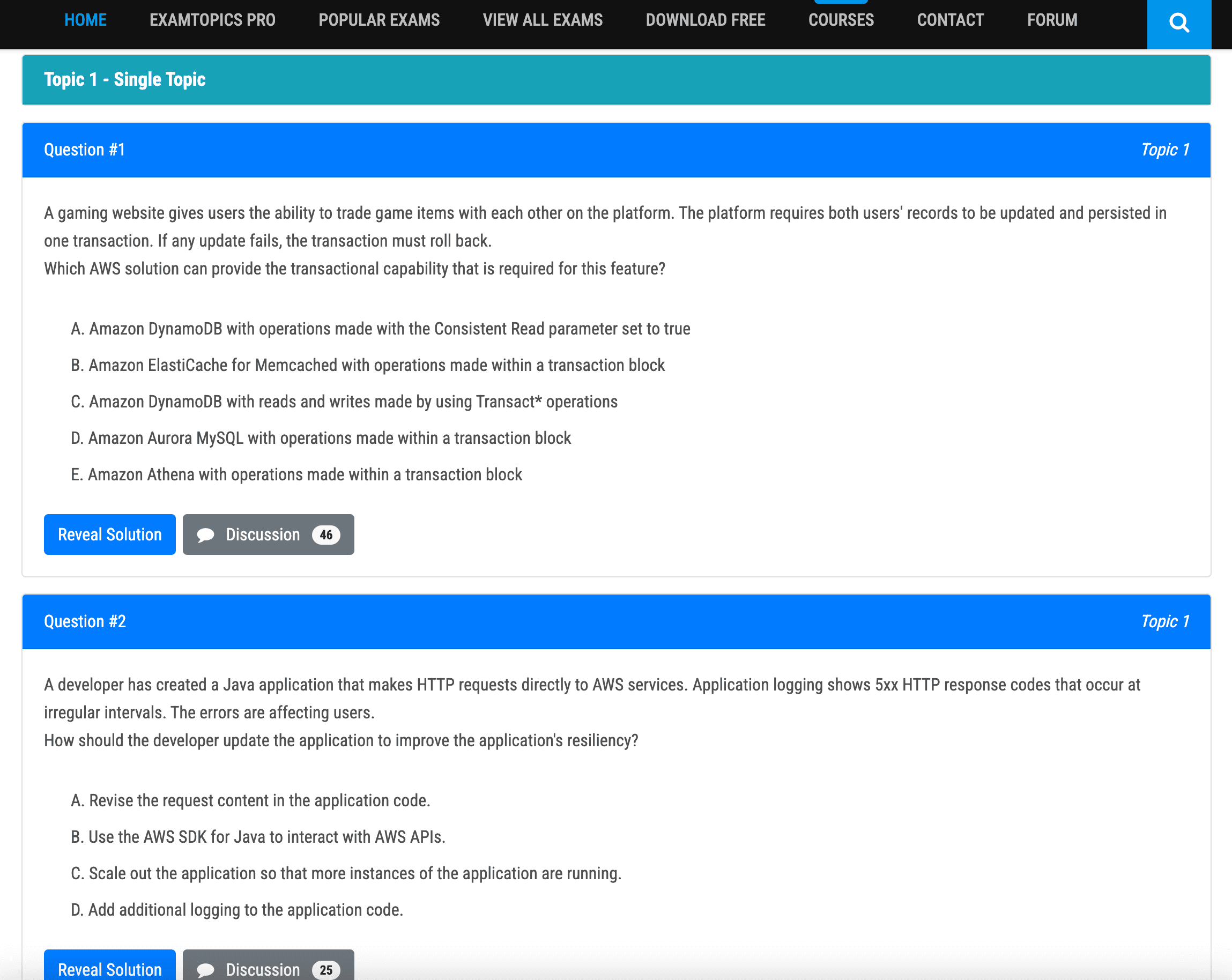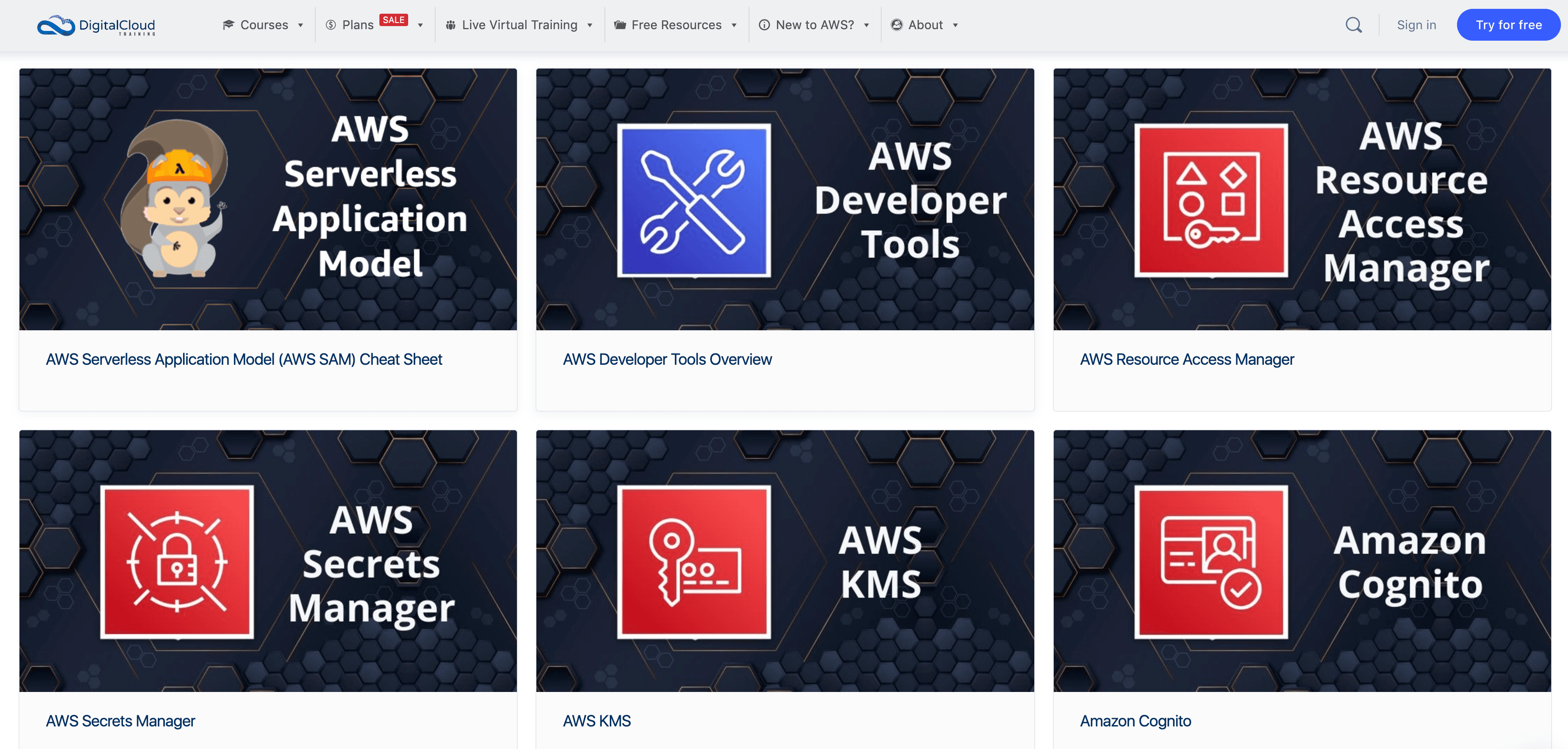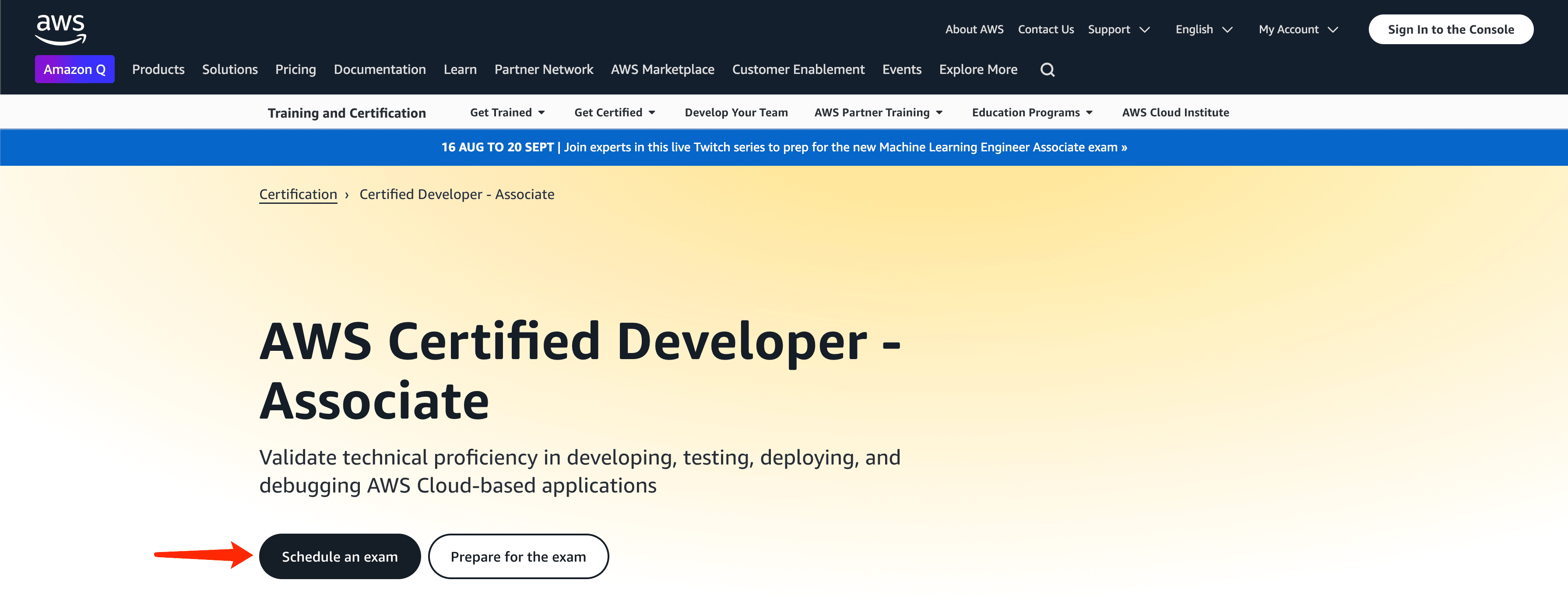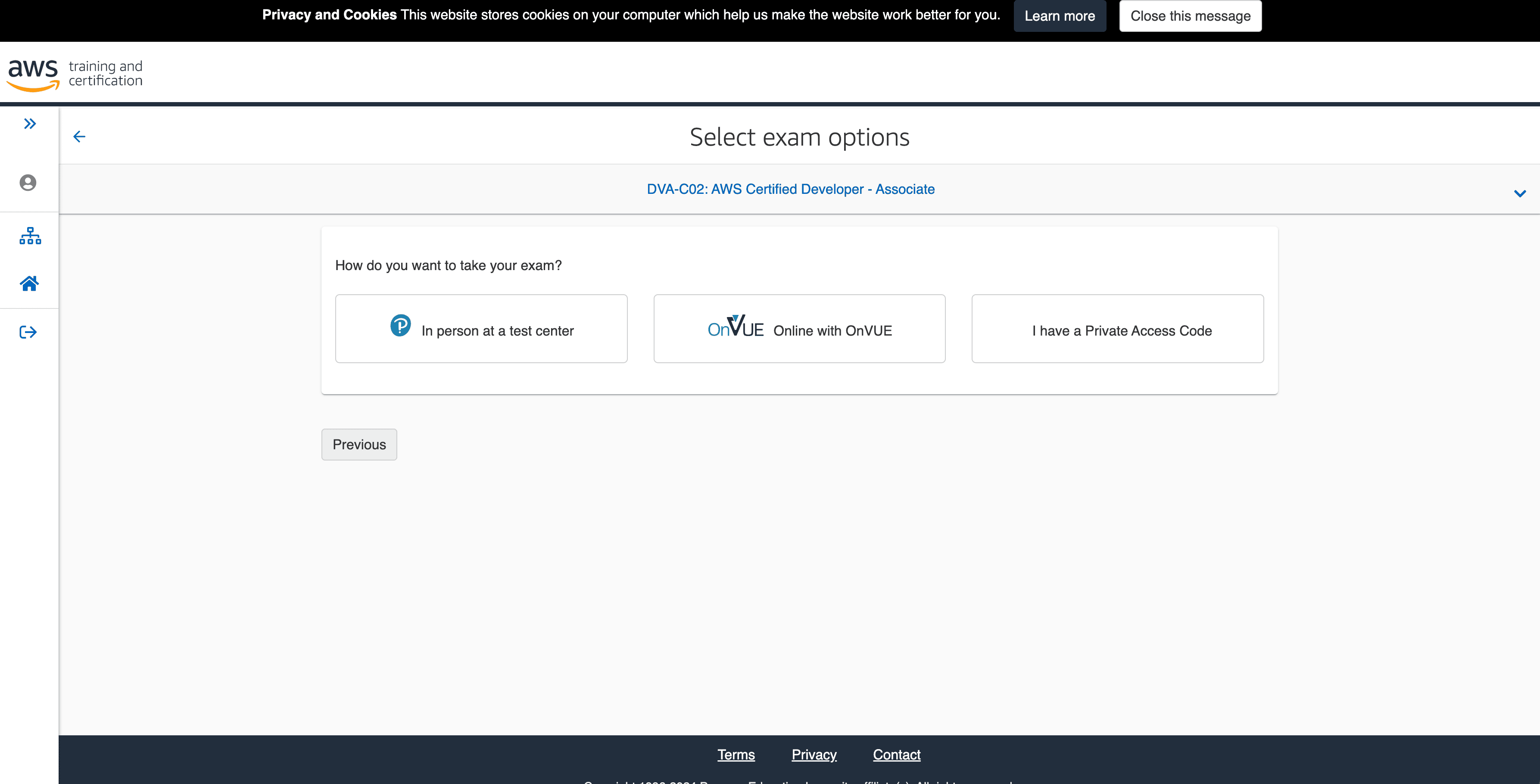- Published on
How I Passed AWS Certified Developer Associate Exam
- Authors

- Name
- Ligang Yan
- @alinlinlink
Background:
I've been working in the tech industry for nearly 10 years. The first 7 years of my career were dedicated to developing mobile applications, and over the past 3 years, I've transitioned to full-stack development using Node.js, React, and other frameworks.
During this time, I also relocated to Canada, which brought new challenges. Finding a job in this period was tough, especially with the constant news of layoffs at large companies.
I noticed that many job postings required experience with AWS or GCP, particularly with services like AWS Lambda, DynamoDB, S3, API Gateway, ECS, and EC2. Many also mentioned that having an AWS Developer certification would be a plus. This motivated me to focus on earning the certification. After spending about two weeks practicing exam questions and reviewing key concepts, I successfully passed the exam on my first attempt.
How to Pass the Exam
- Exam overview
- Practice Tests
- Schedule the Exam
- Taking the Exam
- Waiting for Results
1. Exam overview
You can find all the information about the exam in the PDF AWS-Certified-Developer-Associat_Exam-Guide.pdf provided by AWS. I’ve highlighted some key details here.
| Category | Associate |
|---|---|
| Exam duration | 130 minutes |
| Exam format | 65 questions; either multiple choice or multiple response |
| Cost | 150 USD. Visit Exam pricing for additional cost information, including foreign exchange rates |
| Testing options | Pearson VUE testing center or online proctored exam |
| Languages offered | English, French (France), Italian, Japanese, Korean, Portuguese (Brazil), Simplified Chinese, and Spanish (Latin America). |
The exam lasts 2 hours and 10 minutes, with 65 questions to answer for a fee of $150 USD. If English isn’t your first language, you can request an additional 30 minutes, but make sure to do so before booking your exam.
The exam primarily consists of scenario-based questions, with only two types of questions:
- Multiple choice: One correct response and three incorrect responses (distractors)
- Multiple response: Two or more correct responses out of five or more options
Your exam results are reported as a scaled score ranging from 100 to 1,000, with a minimum passing score of 720. This means you need to correctly answer at least 46 out of 65 questions to pass.
The exam content is divided into four domains:
- Domain 1: Development with AWS Services (32% of scored content)
- Domain 2: Security (26% of scored content)
- Domain 3: Deployment (24% of scored content)
- Domain 4: Troubleshooting and Optimization (18% of scored content)
2. Practice Tests
If you already have some experience with AWS, I believe the best way to prepare is to start by answering practice questions. As you go through them, make note of the questions you get wrong, identify the knowledge areas you don’t fully understand, and then focus on targeted supplementary learning.
ExamTopics offers a number of questions specifically for the exam. I strongly recommend reviewing all of these questions (at least the free ones) a day or two before your exam. However, be cautious and rely on the community-voted answers rather than the ones provided by ExamTopics itself.
I went through all 100 questions and achieved an accuracy rate of about 75%.
Some of the questions on ExamTopics are similar to those on the actual exam. When I encountered questions during the exam that I had already seen on ExamTopics, I was able to quickly choose the correct answers.
https://www.examtopics.com/exams/amazon/aws-certified-developer-associate/view/

I've also uploaded the first 100 questions to GitHub, which you can access:
https://github.com/allenyan513/AWS-Developer-Associate-DVA-C02-100-questions/tree/main
Let’s go through a simple test question as a demonstration. Most of the test questions are scenario-based, which helps in understanding the context better. Here’s an example of a multiple-choice question:
An application is using Amazon Cognito user pools and identity pools for secure access. A developer wants to integrate the user-specific file upload and download features in the application with Amazon S3. The developer must ensure that the files are saved and retrieved in a secure manner and that users can access only their own files. The file sizes range from 3 KB to 300 MB. Which option will meet these requirements with the HIGHEST level of security?
- A. Use S3 Event Notifications to validate the file upload and download requests and update the user interface (UI).
- B. Save the details of the uploaded files in a separate Amazon DynamoDB table. Filter the list of files in the user interface (UI) by comparing the current user ID with the user ID associated with the file in the table.
- C. Use Amazon API Gateway and an AWS Lambda function to upload and download files. Validate each request in the Lambda function before performing the requested operation.
- D. Use an IAM policy within the Amazon Cognito identity prefix to restrict users to use their own folders in Amazon S3.
The correct answer should be D. Let’s see how ChatGPT explains it.
Explanation:
Option D leverages AWS Identity and Access Management (IAM) policies that are dynamically generated and attached to each user based on their Amazon Cognito identity. This allows you to grant each user access only to their specific folder (or prefix) in an S3 bucket. By setting up an IAM policy, you ensure that users can only access their own files and no others, which is the most secure and straightforward approach.
Option A (using S3 Event Notifications) is not designed for securing access to specific files. It's more for triggering actions after an event like a file upload or download but doesn't inherently provide security for user-specific file access.
Option B involves using a DynamoDB table to manage file metadata and enforce access control in the UI. While this approach can be part of a broader solution, it does not directly enforce security at the S3 level. This means it's more prone to security vulnerabilities if not implemented carefully.
Option C suggests using API Gateway and Lambda to manage file uploads and downloads, including validating each request. While secure, this option adds complexity and potential latency because every file operation would require invoking a Lambda function. It's secure but less efficient compared to using IAM policies directly with S3.
I highly recommend this cheatsheet as well. It’s an excellent resource that compiles all the key knowledge points for AWS services within the exam scope. I suggest reading through it at least once.
https://digitalcloud.training/category/aws-cheat-sheets/aws-developer-associate/

3. Schedule the Exam
Once you’ve completed 100 or more practice questions and reviewed all the cheatsheets, you can go ahead and schedule your exam.
https://aws.amazon.com/certification/certified-developer-associate/?c=sec&sec=resources

You have the option to take the exam either online or offline. For the online exam, you’ll need to install a client on your computer, which will use your camera and microphone to monitor you in real time. It’s also essential to have a stable internet connection.
However, I encountered some issues with the client on my MacBook, so I opted for the offline exam instead.

Offline exams are available every day from Monday to Sunday. I chose to take mine on a Saturday at noon.
4. Taking the exam
The most important thing on exam day is to bring two forms of identification. The first and last names on both your primary and secondary IDs must match exactly with the names entered in your AWS Certification Account during registration.
For detailed information, you can refer to the following link: https://aws.amazon.com/certification/policies/during-testing/#ID_Requirements
When you arrive at the offline test center, the staff will take your personal belongings and store them in a locker. You’ll then have your photo taken, which will be entered into the system, and sign in. After that, you’ll be able to start the exam on time. If you have any questions during the test, simply raise your hand. My experience was very smooth.
5. Waiting for result

